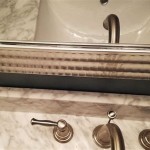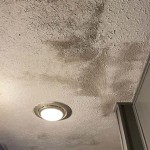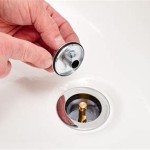How to Cut a Bathroom Countertop: A Comprehensive Guide
Cutting a bathroom countertop is a task frequently encountered during renovations or installations. Whether replacing an old, damaged countertop or customizing a new one to fit specific dimensions, understanding the process is crucial for achieving a professional and accurate result. This article provides a detailed guide on how to cut a bathroom countertop effectively, covering essential tools, safety precautions, and step-by-step instructions.
Planning and Preparation: Essential First Steps
Before initiating the cutting process, meticulous planning and thorough preparation are paramount. This stage sets the foundation for a successful outcome, minimizing errors and ensuring a safe working environment. Proper planning involves accurately measuring the countertop, determining the necessary cuts, and selecting the appropriate tools and techniques for the material involved.
Accurate Measurements: The first step is to take precise measurements of the existing space where the countertop will be installed. Measure the length, width, and depth of the area, paying close attention to any obstructions such as walls, pipes, or cabinetry. It is recommended to measure multiple times to verify accuracy. Consider the overhang required beyond the cabinet base and any backsplashes that need to be accommodated. These measurements will dictate the dimensions of the countertop to be cut.
Material Identification: Different countertop materials require specific cutting techniques and tools. Common bathroom countertop materials include laminate, solid surface (such as Corian), quartz, granite, and marble. Laminate is typically the easiest to cut, while natural stone like granite and marble demands specialized equipment and expertise. Identifying the material accurately will inform the selection of the appropriate saw blade, cutting speed, and other relevant parameters.
Cut Layout and Marking: Once the measurements are confirmed and the material identified, lay out the cut lines on the countertop. Utilize a straight edge, such as a carpenter's square or a long level, to draw accurate lines. For complex shapes or cutouts, creating a template from cardboard or plywood can be helpful. Ensure the template conforms precisely to the required dimensions. Use a fine-tipped marker or pencil to mark the cutting lines, making them clearly visible yet not excessively thick. For materials prone to chipping, apply masking tape along the cut lines to provide a cleaner edge.
Tool Selection: The choice of cutting tool depends heavily on the countertop material. For laminate countertops, a fine-tooth circular saw or a jigsaw with a laminate-cutting blade is often suitable. Solid surface materials can be cut with a circular saw equipped with a carbide-tipped blade designed for solid surface materials. Quartz, granite, and marble require specialized tools such as wet saws with diamond blades. These saws use water to cool the blade and minimize dust, which is crucial when working with these materials. In addition to the saw, gather other essential tools such as safety glasses, ear protection, a dust mask, clamps, and a vacuum cleaner to manage dust and debris.
Workspace Preparation: Prepare a clean and well-lit workspace. Place the countertop on a stable surface, ensuring it is adequately supported to prevent flexing or vibration during cutting. Cover the work surface with a protective layer, such as a drop cloth or cardboard, to guard against scratches or damage. Ensure ample space around the countertop to maneuver the saw and other tools safely. Good ventilation is also important, especially when cutting materials that produce dust. If using a wet saw, position it near a water source and ensure proper drainage.
Cutting Techniques for Different Materials
The cutting technique employed is largely dictated by the material of the countertop. Each material possesses unique properties that necessitate specific approaches to achieve a clean, accurate cut without causing damage or chipping.
Laminate Countertops: Laminate countertops are relatively easy to cut, but precautions must be taken to prevent chipping. Use a fine-tooth circular saw blade or a jigsaw with a blade designed for laminate. When using a circular saw, score the cut line with a utility knife before cutting to minimize chipping. Cut slowly and steadily, applying gentle pressure. If using a jigsaw, position the countertop with the finished side facing down and cut from the back to the front. This will help to prevent chipping on the visible surface. Clamping a straight edge to the countertop can guide the saw and ensure a straight cut. Consider using a router with a flush trim bit to refine the edges after cutting.
Solid Surface Countertops: Solid surface materials like Corian can be cut with a circular saw or a router. Use a carbide-tipped blade designed for solid surface materials. Cut at a moderate speed, allowing the blade to do the work without forcing it. For intricate cuts, a router with a template is often the preferred method. Secure the template to the countertop and use a flush trim bit to follow the template's contours. Routers offer greater control and precision for shaping edges and creating cutouts. After cutting, sanding the edges with progressively finer grits of sandpaper will create a smooth, finished surface. Pay attention to the manufacturer's recommendations regarding suitable blades and cutting speeds.
Quartz Countertops: Quartz countertops require specialized cutting tools due to their hardness and density. A wet saw with a diamond blade is essential for cutting quartz. The water cools the blade and minimizes dust, preventing overheating and damage. Cut slowly and steadily, allowing the blade to do the work. Avoid forcing the blade, as this can cause chipping or cracking. For complex shapes or cutouts, drilling pilot holes before cutting can reduce the risk of chipping. Wear appropriate safety gear, including safety glasses, ear protection, and a dust mask, to protect against harmful dust and debris. Proper water flow is crucial to prevent the blade from overheating and to keep dust levels down.
Granite and Marble Countertops: Granite and marble are natural stones that require the most specialized cutting techniques. Like quartz, these materials should be cut using a wet saw with a diamond blade. Support the countertop adequately to prevent it from flexing or vibrating during cutting. Cut slowly and steadily, allowing the blade to do the work. Multiple passes with shallow cuts are often preferable to a single deep cut. Pay close attention to the grain and any imperfections in the stone, adjusting the cutting path as needed. Wearing appropriate safety gear is crucial when working with natural stone, as the dust can be harmful if inhaled. After cutting, the edges may need to be polished or honed to achieve the desired finish. Professional fabrication is often recommended for granite and marble countertops to ensure accurate cuts and high-quality finishes.
Safety Precautions and Best Practices
Prioritizing safety and adhering to best practices are vital throughout the countertop cutting process. These measures safeguard against potential injuries and contribute to a professional and satisfactory outcome. Neglecting safety can result in accidents, material damage, and compromised results.
Personal Protective Equipment (PPE): Always wear appropriate personal protective equipment (PPE) when cutting countertops. This includes safety glasses to protect the eyes from flying debris, ear protection to reduce noise exposure, and a dust mask or respirator to prevent inhalation of dust particles. Gloves can also protect the hands from sharp edges and potential cuts. The specific PPE required may vary depending on the countertop material and the tools being used.
Proper Tool Handling: Familiarize oneself with the proper operation and safety features of the cutting tools before using them. Read the manufacturer's instructions and follow all safety guidelines. Ensure the tools are in good working condition and that the blades are sharp and properly installed. Secure the countertop firmly to prevent it from moving during cutting. Never reach over the blade or cut towards oneself. Maintain a firm grip on the tool and avoid distractions. Be aware of the location of the power cord and avoid cutting through it.
Dust Control: Cutting countertops can generate significant amounts of dust, which can be harmful if inhaled. Use a vacuum cleaner with a HEPA filter to collect dust as it is produced. If using a wet saw, ensure adequate water flow to suppress dust. Work in a well-ventilated area to minimize dust buildup. When working with materials like quartz, granite, or marble, a dust mask or respirator is essential. Clean up dust and debris promptly after cutting to prevent it from becoming airborne again.
Safe Disposal of Waste: Dispose of countertop scraps and waste materials properly. Sharp pieces should be handled with care to avoid cuts. Check local regulations for proper disposal methods. Some materials, such as laminate or solid surface scraps, may be recyclable. Natural stone scraps can often be repurposed for other projects. Never leave waste materials lying around, as they can pose a safety hazard.
Professional Assistance: For complex cuts or when working with expensive or difficult-to-cut materials, consider seeking professional assistance. Professional countertop fabricators have the expertise, tools, and experience to ensure accurate cuts and high-quality finishes. This can save time, reduce the risk of errors, and provide peace of mind.
By following these guidelines, individuals can successfully cut bathroom countertops, achieving accurate results while prioritizing safety and minimizing potential damage. Careful planning, proper tool selection, adherence to best practices and stringent safety measures are all critical elements in this process.

Diy Vanity Tops For Your Bathroom

How To Make A Wooden Vanity Top Countertop

Full Bathroom Remodel Part 7 Tile Counter With Sink

How To Build Protect A Wood Vanity Top Houseful Of Handmade

Tile 101 How To Build Counters Kick Ass Or Die

Replace Granite Countertops Transform Your Bathroom S Look

How To Remove A Countertop From Vanity Decor Adventures

How To Replace A Vanity Top And Save Craving Some Creativity

How To Install Marble Countertops In A Bathroom Step By

Butcher Block Countertops And Sinks For Bathroom Diy Projects Hardwood Reflections
Related Posts







